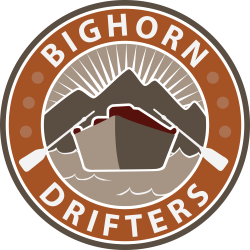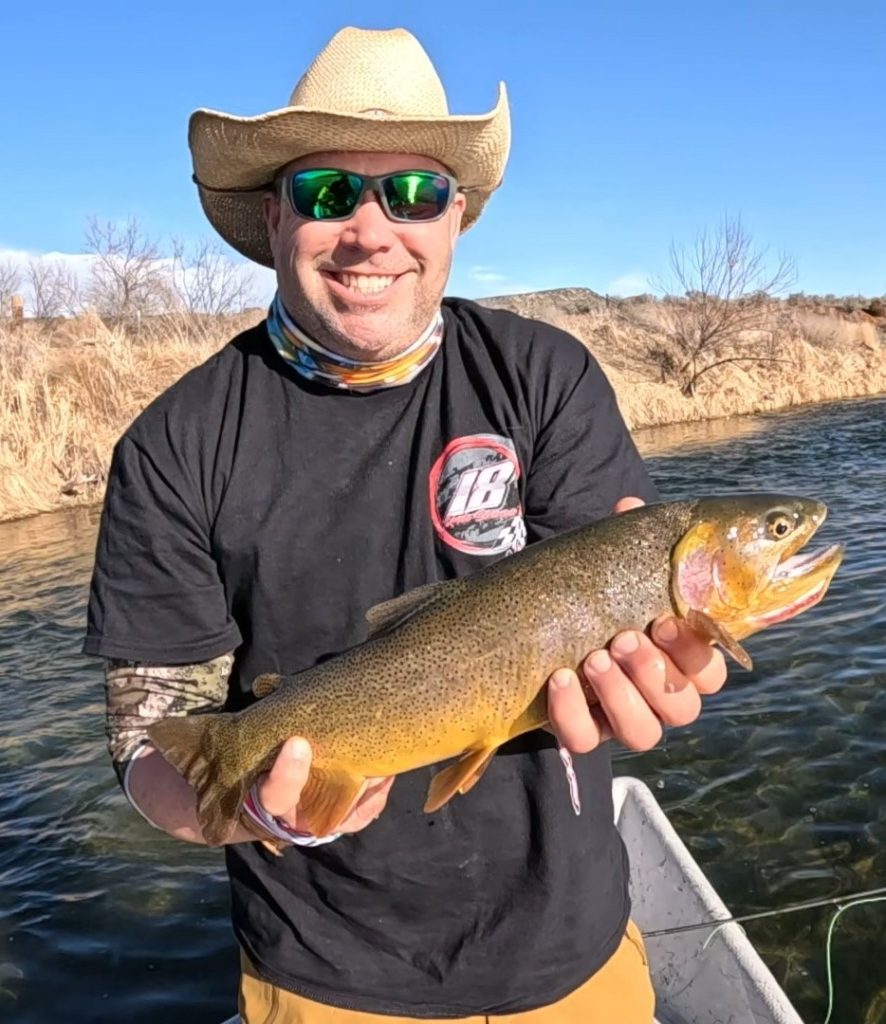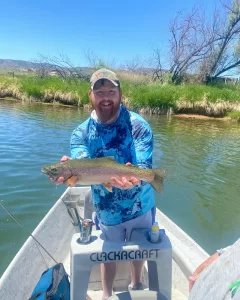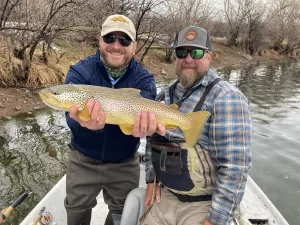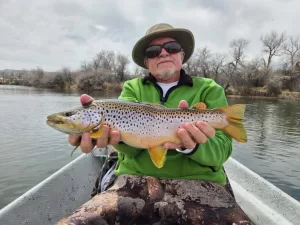Wyoming Bighorn River (Thermopolis Wyoming)
Wedding of the Water downstream
February 27th, 2024
Weather Conditions: Weather Forecast
The weather in Thermopolis, Wyoming, is transitioning towards a more spring-like pattern, marked by sporadic storms with moisture and strong winds. It’s crucial to check the weather before heading out on the river, as conditions can be unpredictable. The fish, too, may be affected by the changing weather.
Water Conditions: Current Flows
As of now, the Bighorn River is flowing at approximately 1013 cubic feet per second (CFS), maintaining a clear flow. These flows have remained relatively stable over the winter, and we anticipate them to stay consistent until mid-April. So, expect conditions on the river to remain unchanged for the time being.
Hatches and Insects:
At present, the primary food sources for the trout are midges and sow bugs, with the emergence of small blue wing olives becoming noticeable. Additionally, flies imitating annelids and eggs are proving effective. As we progress into the next few months, anticipate an increase in the prevalence of blue-winged olives (Baetis) and potentially other mayfly hatches, along with the possibility of caddis hatches. Keeping a varied fly selection and adapting to changing insect activity will likely enhance your success on the water.
Fish Activity:
Currently, the fish are highly active, with rainbows engaging in spawning activities. Consequently, other fish, taking advantage of the aftermath, are actively feeding behind the spawning rainbows. Interestingly, the rainbows are not confined to specific gravel spots; instead, they are distributed throughout the entire river.
Successful catches are occurring in deep pockets below swifter currents. The Browns and Cutthroats, displaying an optimistic attitude, are pursuing the rainbows into their spawning beds, resulting in successful catches in those deeper areas. This dynamic behavior among the fish presents exciting opportunities for anglers to explore and enjoy diverse fishing experiences.
Flies:
Dry Flies: Griffith Gnat, Renegade, Mole Midge
Nymphs: Zebra Midge, Mercury Midge, Poison tongue, two-bit Midge, Epoxy Back Sow, Ray Charles, Juju Midge, Top Secret Midge
Streamers: Thin Mint, Black Woolly Bugger, Rusty Trombone
Catches and Success Rates:
Anglers are experiencing a relatively consistent and fruitful time on the water, with fish being caught at a steady rate. The noteworthy aspect is the impressive size of the catches, with the average measuring between 18 to 20 inches. This signifies a robust and healthy fish population, offering anglers the thrill of landing sizable specimens on a regular basis. The consistent success in capturing fish of such substantial size adds an extra layer of excitement to the fishing experience, making each outing a rewarding and memorable adventure for those casting their lines in these abundant waters.
Local Regulations and Updates: 2024 Fishing Regulations
General Fishing Tips:
Get Deep when fishing the midges using techniques like drop shot and euro nymphing techniques can get the flies in the zone quicker. There is relatively no pressure currently although that is going to change. March and April will see a lot more pressure as we get into the true spring weather.
Crowd and Access Information:
As fishing pressure increases, it becomes paramount for all anglers to exercise heightened awareness and respect for the environment, private land, fellow fishermen, and the principles of river etiquette. Being mindful of private property boundaries is crucial to maintaining positive relationships with landowners and preserving access to coveted fishing locations. Additionally, practicing responsible and considerate behavior towards other anglers ensures a harmonious and enjoyable experience for everyone on the water.
River etiquette plays a pivotal role in sustaining a healthy and sustainable fishing community. This includes adhering to established norms such as giving other anglers ample space, keeping noise level reasonable, and properly disposing of waste. By embracing these principles, we collectively contribute to the conservation of our natural resources and foster an atmosphere of mutual respect among the fishing community. As we navigate the waters during times of increased fishing activity, let us prioritize responsible angling practices, uphold the values of good sportsmanship, and continue to be stewards of the environment we cherish.
